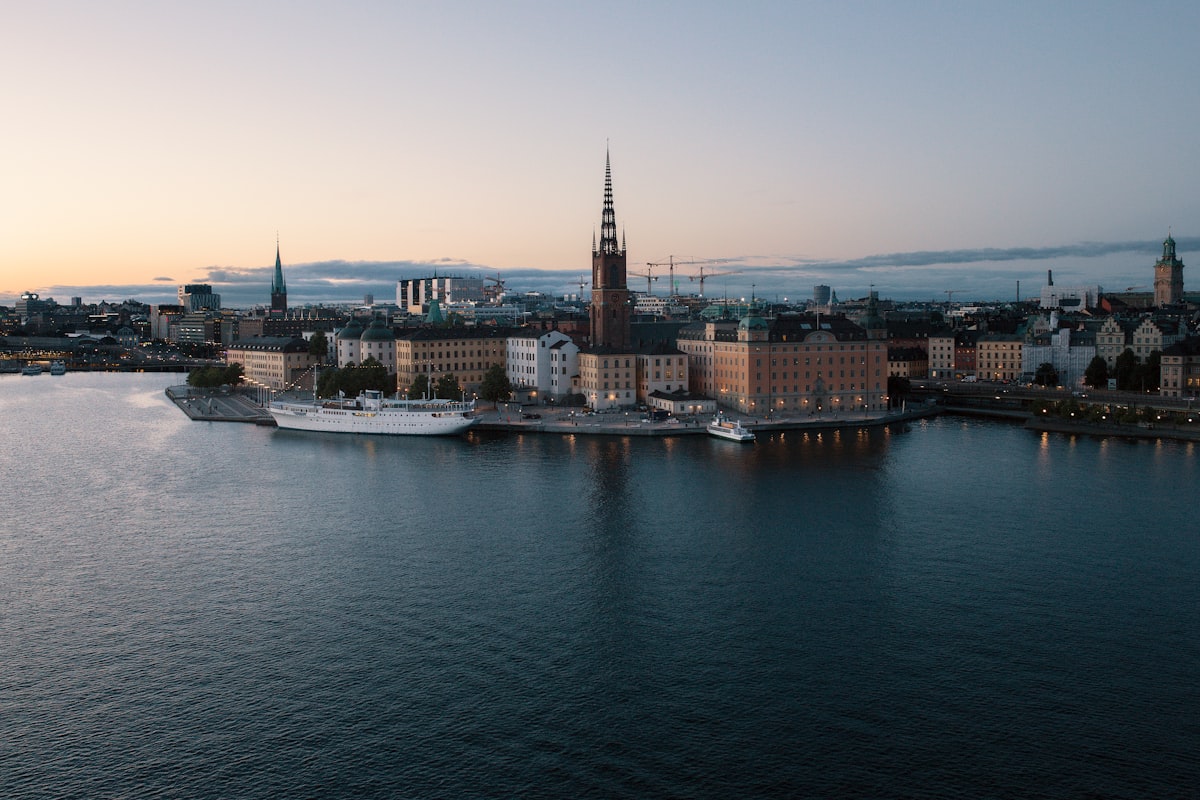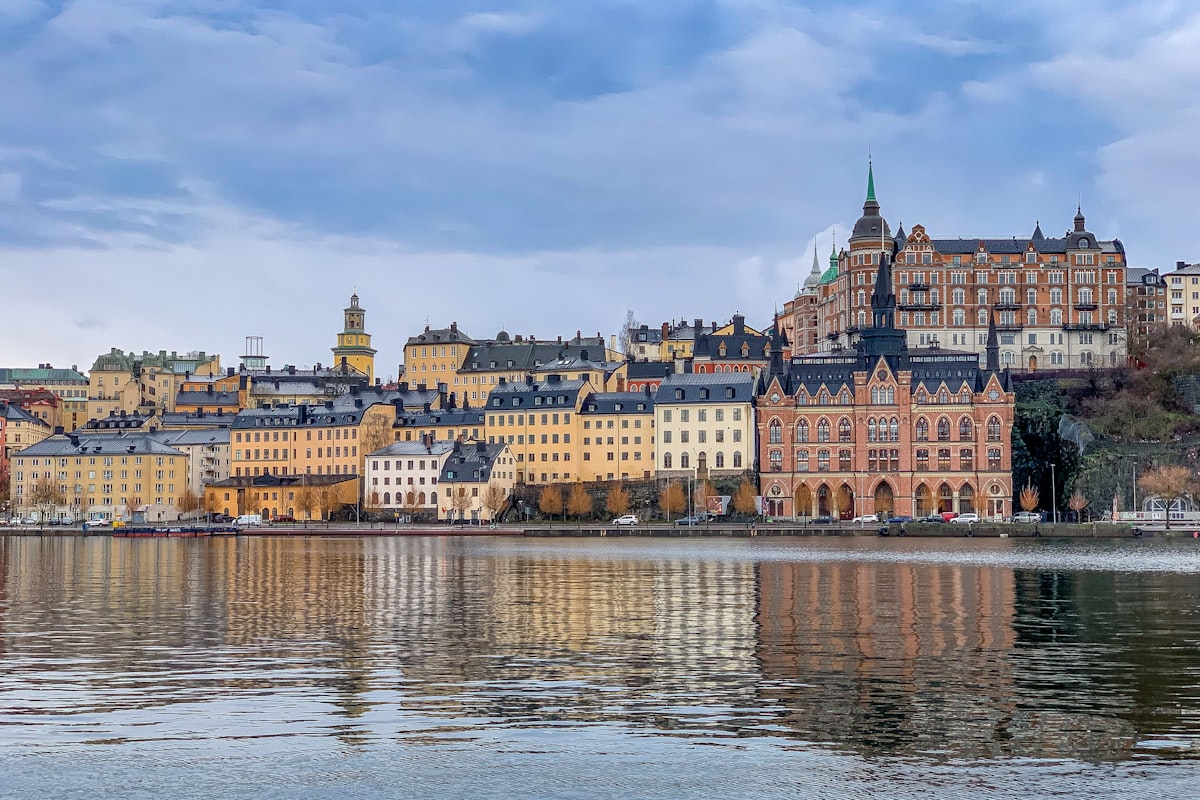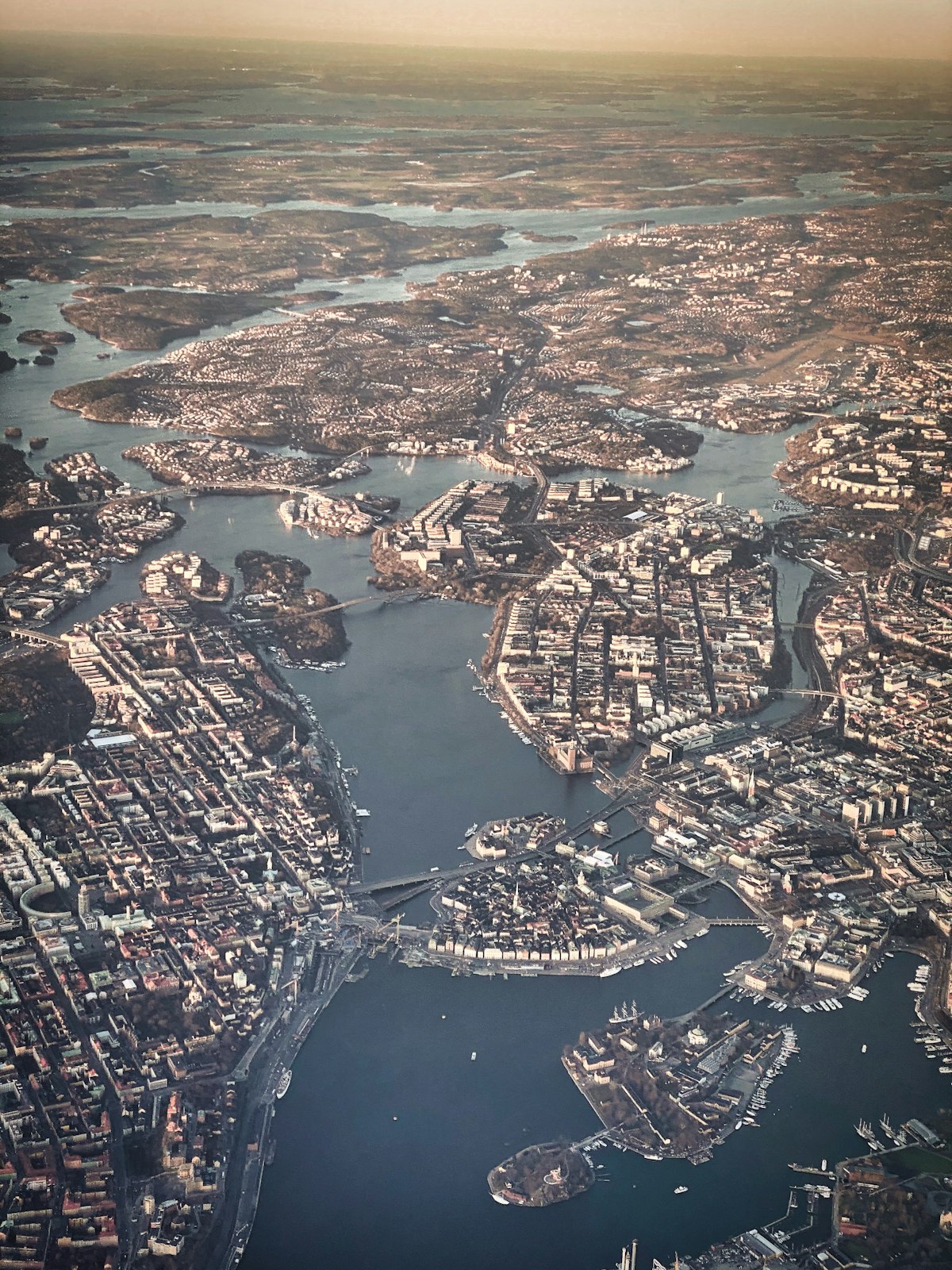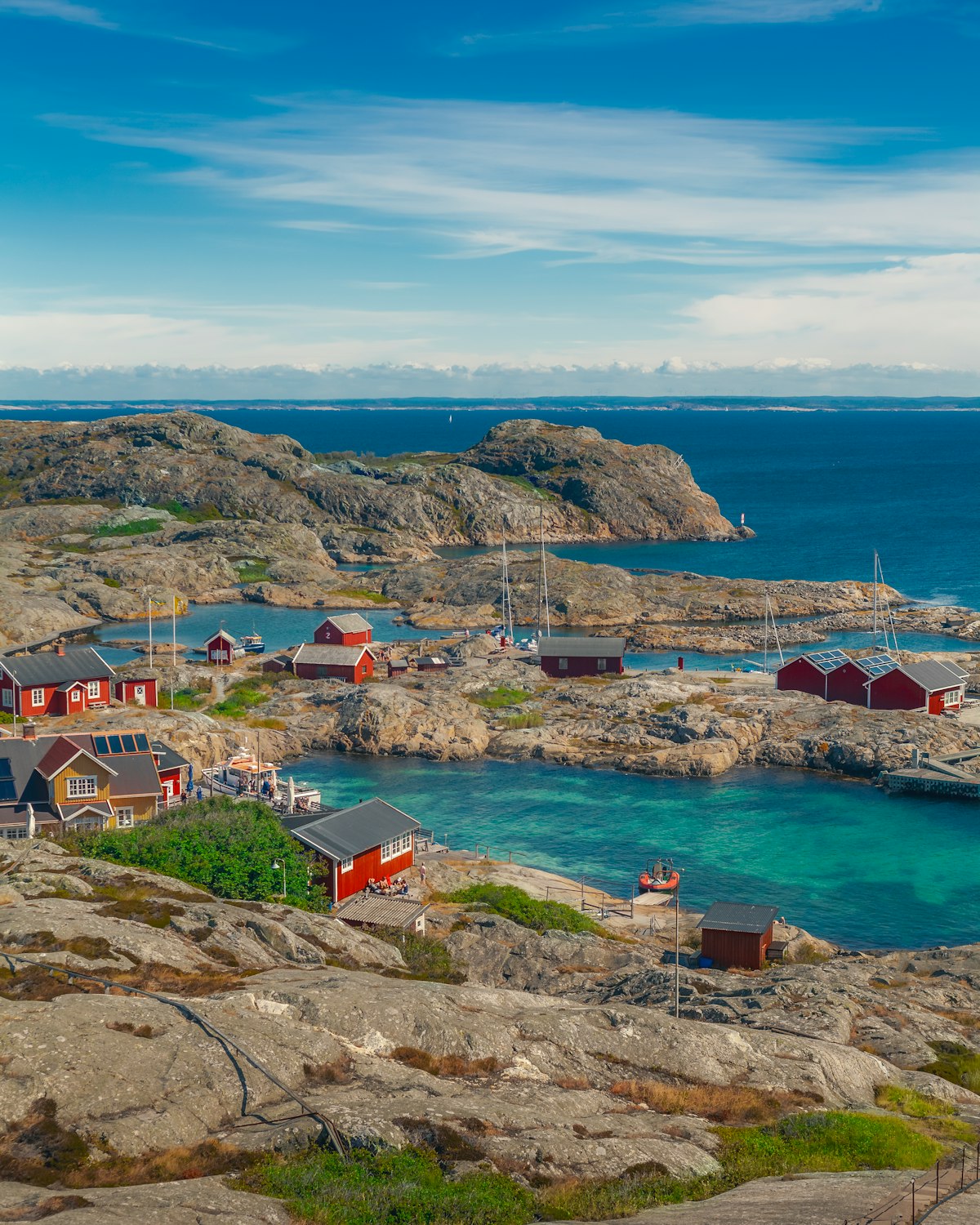Stockholm : City Born From The Sea

Traces of the past are everywhere in Stockholm. The imposing rocky cliffs, billions of years old, make more of a mark on the city than its grandest buildings. Waterways course through channels created by fault lines that were formed hundreds of millions of years ago. The last inland glacier was a prime architect of the city. As the ice sheet retreated and melted, it shaped the bedrock into gently sloping north-facing surfaces with rough, craggy lee sides.
We can say that Stockholm was born from the sea. This part of Sweden was the last to rise above sea level after the most recent ice age. The land that was to become the Swedish capital emerged around a vital waterway.
When Stockholm was founded, around the year 1250, the sea level was more than 3.5 meters (11.5 ft) higher than it is today. The land continues to rise due to post-glacial land rise, and new islets in the archipelago are still reaching the surface. Beginning in the late 1860s, many glacier-smoothed outcrops were dynamited to make way for housing, roads and subway tunnels. Nevertheless, Stockholm is still characterized by its steep cliffs and moraine slopes, its stretches of open water, bays and rapids.

Three archipelagos meet in Stockholm: the inland province of Lake Mälaren, the densely populated islands of the city center, and the hotchpotch of islands and islets in Saltsjön, leading out into the Baltic. Stockholm, the city of water, lies at the junction of freshwater and brackish. No other city has Stockholm's mix of freshwater and seawater, streams between inland lake and archipelago, and scenic canals and bays. Stockholm is said to have a total of 180 kilometers (112 miles) of beaches.

Stockholm is built on rocky islands and sandy ridges, surrounded by waterways that are spanned by bridges. The Royal Palace dating from the Swedish Empire, the 19th-century stone buildings and summer houses, and the 21st-century apartment buildings all look out onto the waterways that not only divide Stockholm into distinct neighborhoods but also surround the city's quays with natural coastlines. This watery labyrinth constantly offers new, unexpected juxtapositions and views.
It is easy to be captivated by the geological permanence of Stockholm's cliffs. The rock has also served as a source of material for buildings and walls. The bedrock has given the city sturdy tunnels and stable foundations for a city stronghold.
LAND AND WATER Light, shadows and natural features make Stockholm vibrant. Light falling on the city illuminates the cityscape like a giant sundial. The effect is particularly dramatic at sunrise and sunset. The large expanses of water reflect light across the islands, creating shimmering glints even during the dark winter months. As the sun sets beneath Västerbron, the 'Western Bridge', and a ferry glides over the water and the moon shines over the cliffs of Södermalm to the south, one senses that this is a city in harmony with nature.

New buildings are being erected on old industrial sites in central Stockholm, where the archipelago, urban center and Lake Mälaren meet. Instead of expanding into new, sprawling suburbs, the city is creating residential neighborhoods with jetties and piers, bridges and balconies in an intriguing interplay with the surrounding water.
What makes Stockholm Stockholm is not its architecture, however remarkable that may be in certain quarters. It is the city's location, which is its soul and its most distinctive feature: built on islands as on the mainland, separated by waterways that create an extended, island-dotted lake, with Saltsjön encompassing a unique world of its own with countless islands, islets and skerries before finally reaching the sea.

The endlessly varied, rolling terrain often encloses the vista, causing one's eye to pause on details typical of Södermanland and Uppland idylls. Yet another feature of Stockholm's topography are its cliffs, which make it a city of lovely panoramas, lending it broad scope and magnificence. This union of idyll and wide-ranging views is the very soul and defining quality of Stockholm.
That description is from the book Idyller och utsikter ('Idylls and views'), written in 1923 by Anna Lindhagen, a Swedish politician and social reformer. She was a tireless campaigner for women's voting rights, besides being an advocate for allotment gardens, green city squares and Stockholm's unique natural beauty. Her father, Albert Lindhagen, was a city planner who in 1866 came up with the city plan that has influenced the development of central Stockholm up to the present day, with waterfront areas, parks, tree-lined boulevards and squares with views over the water.
Written by Per Kallstenius